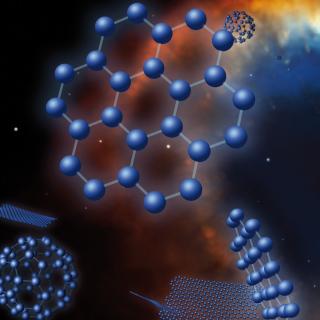Bibcode
Poovelil, Vijith Jacob; Zasowski, G.; Hasselquist, S.; Seth, A.; Donor, John; Beaton, Rachael L.; Cunha, K.; Frinchaboy, Peter M.; García-Hernández, D. A.; Hawkins, K.; Kratter, K. M.; Lane, Richard R.; Nitschelm, C.
Bibliographical reference
The Astrophysical Journal
Advertised on:
11
2020
Journal
Citations
32
Refereed citations
27
Description
The chemical homogeneity of surviving stellar clusters contains important clues about interstellar medium (ISM) mixing efficiency, star formation, and the enrichment history of the Galaxy. Existing measurements in a handful of open clusters suggest homogeneity in several elements at the 0.03 dex level. Here we present (i) a new cluster member catalog based only on APOGEE radial velocities and Gaia-DR2 proper motions, (ii) improved abundance uncertainties for APOGEE cluster members, and (iii) the dependence of cluster homogeneity on Galactic and cluster properties, using abundances of eight elements from the APOGEE survey for 10 high-quality clusters. We find that cluster homogeneity is uncorrelated with Galactocentric distance, $| Z| $ , age, and metallicity. However, velocity dispersion, which is a proxy for cluster mass, is positively correlated with intrinsic scatter at relatively high levels of significance for [Ca/Fe] and [Mg/Fe]. We also see a possible positive correlation at a low level of significance for [Ni/Fe], [Si/Fe], [Al/Fe], and [Fe/H], while [Cr/Fe] and [Mn/Fe] are uncorrelated. The elements that show a correlation with velocity dispersion are those that are predominantly produced by core-collapse supernovae (CCSNe). However, the small sample size and relatively low correlation significance highlight the need for follow-up studies. If borne out by future studies, these findings would suggest a quantitative difference between the correlation lengths of elements produced predominantly by Type Ia SNe versus CCSNe, which would have implications for Galactic chemical evolution models and the feasibility of chemical tagging.
Related projects

Nucleosynthesis and molecular processes in the late stages of Stellar Evolution
Low- to intermediate-mass (M < 8 solar masses, Ms) stars represent the majority of stars in the Cosmos. They finish their lives on the Asymptotic Giant Branch (AGB) - just before they form planetary nebulae (PNe) - where they experience complex nucleosynthetic and molecular processes. AGB stars are important contributors to the enrichment of the
Domingo Aníbal
García Hernández